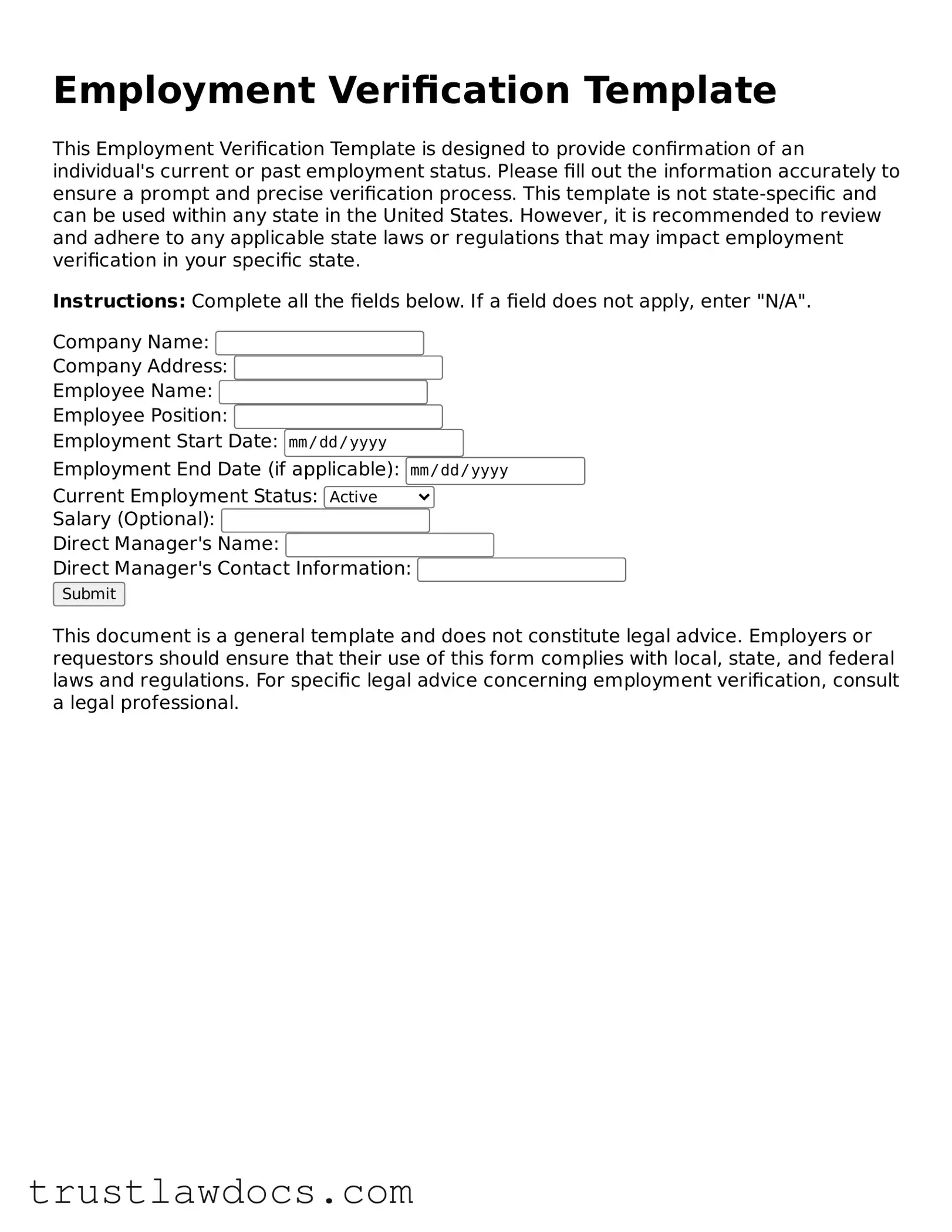What is an Employment Verification form?
An Employment Verification form is a document used by employers to confirm the employment status of current or former employees. This form typically includes information such as the employee's job title, dates of employment, annual salary, and sometimes, a brief description of job duties. It is commonly requested by third parties, such as lenders, landlords, or future employers, to verify a person's employment history and income level.
Who can request an Employment Verification form?
Requests for an Employment Verification form can be made by any third party with a legitimate interest in verifying an individual's employment status. This includes lenders considering a loan application, landlords assessing rental applications, government agencies for benefits application, and employers conducting background checks on potential hires. However, it is essential to note that most employers will require a written consent from the employee before releasing this information to protect the employee's privacy.
How can an employee obtain an Employment Verification form?
Employees needing an Employment Verification form should first contact their Human Resources (HR) department or manager. Many organizations have a standard process in place for handling such requests. The employee may need to submit a written request or fill out a specific form provided by their employer. In some cases, the employer may also require a form or written request from the third party seeking the verification.
What information is included on an Employment Verification form?
The Employment Verification form typically includes the employee's full name, job title, dates of employment, and current salary. Some forms may also request details such as employment status (full-time, part-time, temporary), hours worked per week, and a brief description of job responsibilities. The level of detail provided can vary depending on the employer's policies and the information requested by the third party.
Is there a standard Employment Verification form?
There is no universal standard Employment Verification form that all employers use. Each organization may have its own version, designed to comply with its policies and the laws of the jurisdiction in which it operates. However, the content is generally similar across different forms, focusing on verifying the key aspects of an employee's job history and income.
How long does the Employment Verification process take?
The length of time required to complete an Employment Verification can vary significantly depending on the employer's procedures and the completeness of the information provided by the employee and the requesting party. Some verifications can be completed within a day, especially if the employer uses electronic verification systems. However, it can take longer if the process is done manually or if additional information is required. It's advisable for employees and requesting parties to allow at least a week for the verification to be completed.
Is an employee's consent required for Employment Verification?
Yes, in most cases, an employee's written consent is required before an employer can release personal and employment information to a third party. This requirement helps protect the employee's privacy rights. The consent form should specify what information can be disclosed and to whom. Employees are advised to carefully review and understand the consent form before signing it.
